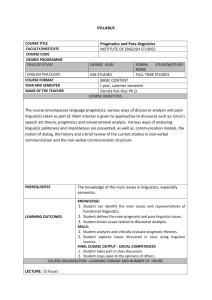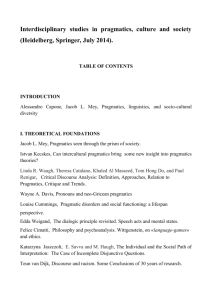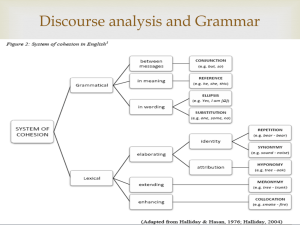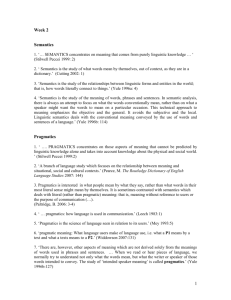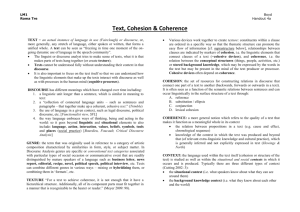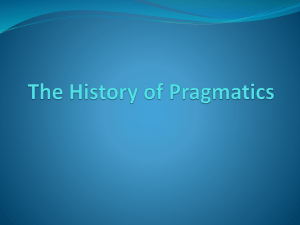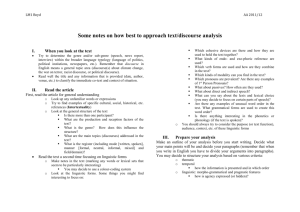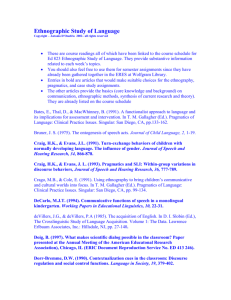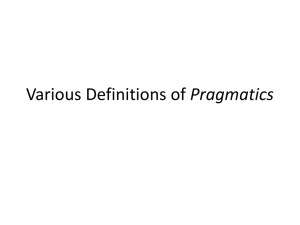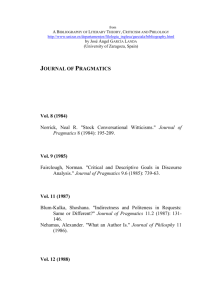Lecture 19 Notes
advertisement
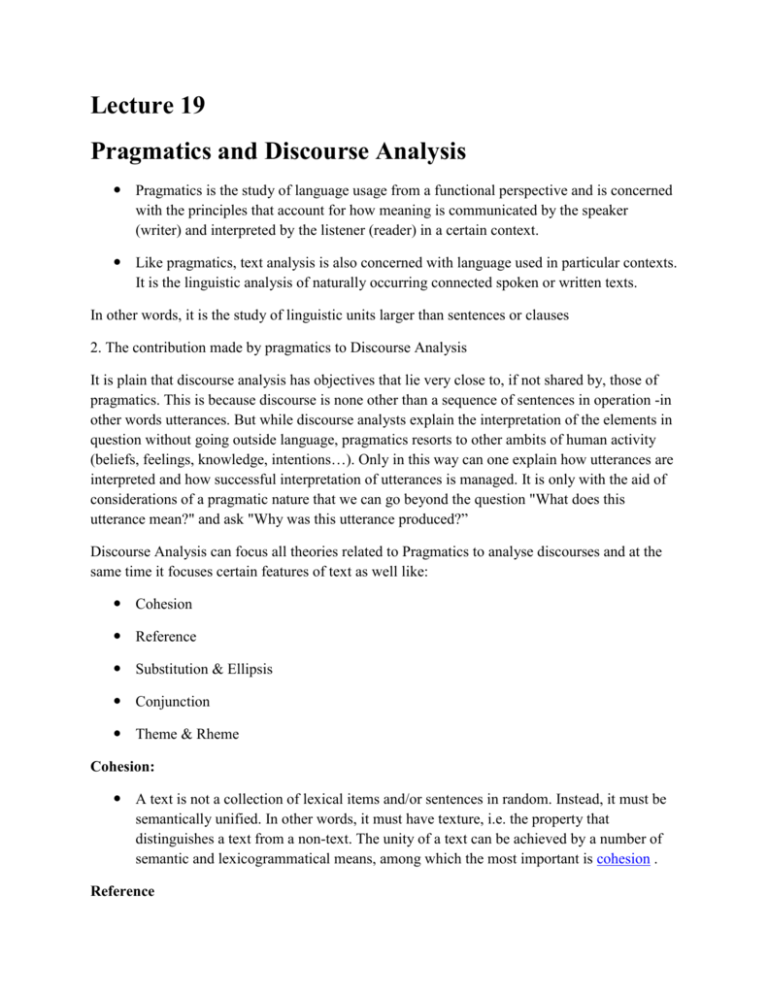
Lecture 19 Pragmatics and Discourse Analysis Pragmatics is the study of language usage from a functional perspective and is concerned with the principles that account for how meaning is communicated by the speaker (writer) and interpreted by the listener (reader) in a certain context. Like pragmatics, text analysis is also concerned with language used in particular contexts. It is the linguistic analysis of naturally occurring connected spoken or written texts. In other words, it is the study of linguistic units larger than sentences or clauses 2. The contribution made by pragmatics to Discourse Analysis It is plain that discourse analysis has objectives that lie very close to, if not shared by, those of pragmatics. This is because discourse is none other than a sequence of sentences in operation -in other words utterances. But while discourse analysts explain the interpretation of the elements in question without going outside language, pragmatics resorts to other ambits of human activity (beliefs, feelings, knowledge, intentions…). Only in this way can one explain how utterances are interpreted and how successful interpretation of utterances is managed. It is only with the aid of considerations of a pragmatic nature that we can go beyond the question "What does this utterance mean?" and ask "Why was this utterance produced?” Discourse Analysis can focus all theories related to Pragmatics to analyse discourses and at the same time it focuses certain features of text as well like: Cohesion Reference Substitution & Ellipsis Conjunction Theme & Rheme Cohesion: A text is not a collection of lexical items and/or sentences in random. Instead, it must be semantically unified. In other words, it must have texture, i.e. the property that distinguishes a text from a non-text. The unity of a text can be achieved by a number of semantic and lexicogrammatical means, among which the most important is cohesion . Reference Reference refers to the semantic relation in which a word or words are used to enable the addressee to identify someone or something. The word or words used for reference are called the reference item. The person(s) or thing(s) identified by the reference item are called the referent. Reference is a specific nature of information that is signaled for retrieval. The information to be retrieved is the referential meaning. John has moved to a new house. He had it built last year. Substitution & Ellipsis Substitution refers to the replacement of one item by another and ellipsis the omission of an item. Unlike reference, which is a relation between meanings, substitution and ellipsis are a relation between linguistic items. Substitution and ellipsis are two closely related processes. A: I ate two eggs and a cup of milk for my breakfast. B: I ate the same. Conjunction Conjunction in grammar refers to a word or expression like and, but, or that connects words, phrases, clauses and/or sentences. As one of the major grammatical cohesive ties, however, this term is used to focus on the inter-clausal and inter-sentential levels. In other words, we concentrate on how the conjunctive expressions contribute to the cohesion of a text. Theme and Rheme Theme can be defined as the element which serves as the point of departure of the message conveyed by the clause. It is the ground from which the clause is taking off. In English, this element always takes the first position of a clause. The remaining part of the message, the part in which the Theme is developed, is called the Rheme . Example: My parents gave me a new bicycle Theme Rheme
